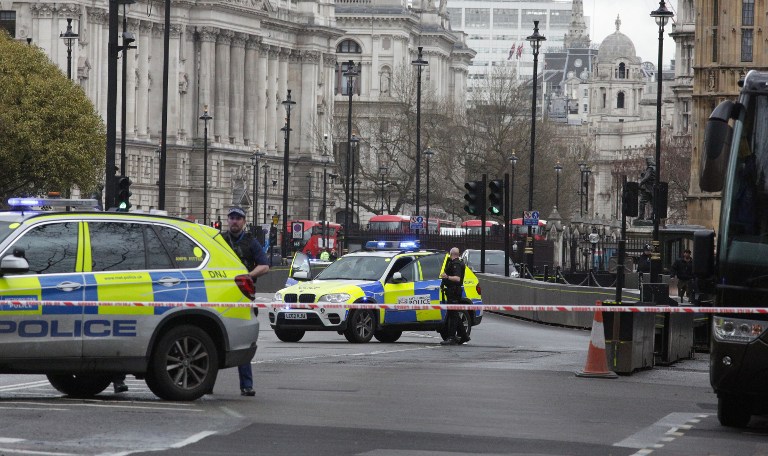London- Whether it is “detained,” “locked,” or “stuck,” each of the labels fit. But most certainly it is not a fortunate experience one looks forward to having.
In one of Westminster Palace’s courtyard corners, a young man who goes by Morcello ashing his cigarette went on to brew some soothing coffee and tea for his fellows in distress, some 2,000 Britons and tourists under lockdown in the British Parliament building after a terrorist attack tacking place.
It was nine in the morning, and the British Parliament premise was more like an open-door fashion show. Lawmakers, visitors and employees all accustomed to sporting whatever best fits their democracy, which they exercise as soon as they enter the building.
Daily screening at the entrance gate is similar to procedures encountered at any given airport. A press delegation comprising 15 correspondents of several foreign media outlets, reporting for Japan, Brazil, Russia, Turkey and European countries was present at the scene.
Asharq Al-Awsat’s reporter was among the delegation which was present for a tour briefing at the parliament which was organized by the British foreign office.
“Unlike the world’s journalists, who naturally would have trouble accessing the scene, we are struggling to escape it,” said a Japanese journalist, who rushed to their computer as soon as the events unfolded.
A few feet away from the areas to which security detail forced all those present to move to, rested the shot-down terrorist’s cold body, who later on was identified as Khalid Masood.
The 9:00am-2:00pm tour started.
“There are 1,200 rooms, and I will not be able to tell you all about them, but I think this is the most important spot,” said parliament staffer who is responsible for visiting tours.
All reporters stood at the tips of their toes to get a look of what the guide was pointing at, a statue of famous British PM and defense secretary during the Second World War, the late Winston Churchill.
Journalists later had lunch with four lawmakers at the main dining hall, which is a scene imbued with British culture.
Tradition was upheld to a tee at the meal– no cross-table chatter was heard. Customs are to be respected at all times.
Soon after the luncheon was interrupted by news broadcasted by agencies and the sound of firecrackers outside the parliament’s building.
“An attack on Westminster Bridge,” a cry was heard. The audience then held their breath still. The news spread like fire “shooting in front of the British Parliament building, and intensified presence of police.”
Everyone realized that they were under a terrorist attack. Everyone’s memory went back to the 7/7 terror events that rocked the British capital in 2005.
After the long hours of waiting, and before leaving, what was remarkable is that diplomats, lawmakers and ministers were not given special treatment. Lords, kitchen workers and visitors were stood in the same row.
All of them were investigated. Interrogators quietly distributed papers and asked if anyone would be willing to share any piece of information.
The inquisitions were handed out with a smile, implying that communication was restricted.
